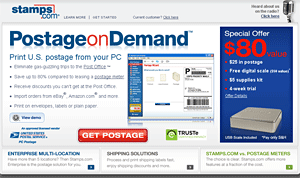Everything Is Incremental
The bad economy has generated desperate calls from owners who are begging for the Internet to save their business.
I wish it were that simple. When I talk to these potential clients, I first have to set their expectations.
 The fact is that a web site and the Internet are not magic. They very, very, very rarely make a site owner a lot of money quickly.
The fact is that a web site and the Internet are not magic. They very, very, very rarely make a site owner a lot of money quickly.
Even if you plot, plan, and work to optimize your web site to return high on Google’s search results, you’re not likely to get rich overnight.
Distrust anyone who promises riches if you hire them to promote, design, or advertise for your business on the Internet. (Or anywhere else!)
Like every other real-world marketing effort, each action you take to market on the Internet will yield incremental results. This is not bad, but it is not magic. For every step you take, you’ll get a few more calls, a few more visitors to your business.
Want a marketing push? Then commit yourself to play in as many of these areas as you can:
- Create or update your web site.
Your web site is your primary electronic calling card. Potential clients check it for your style and personality, in addition to looking for concrete information like services offered. People expect your business to have a site, and they expect it to look like 2010 and not 1999. - Optimize your web site for search engines (also called “Search Engine Optimization” or “SEO”).
You’ll want to do some research or hire a professional for this step, but showing up better in Google is well worth it. - Advertise your goods or services on Craigslist.
Really! Craigslist listings are free, and you can use them to point to your web site for more information. Don’t forget to repost the listing or update it every three days so that you’re not lost too deep in the clutter. - Identify a target client group and create a direct mail campaign.
Really, again! This low-tech approach to an identified group of potential customers should get their attention and invite them to check you out on your web site. Start off by use your local chamber of commerce address list or even the membership list of an affinity group (such as a business exchange network like BNI.) - Claim and spruce up your local business listing in Google and Bing.
These are the two major search engines which show maps of businesses when people search for goods and services. You want a link to your business on the map — this is especially important if you’re selling impulse or food items like pizza. - Run a Google Adwords campaign.
Adwords are the “sponsored listings” which show up on the top and right of the normal search results. You can get new visitors to your site for a couple dollars each. - Send out a monthly electronic magazine.
Even if you’re not selling anything people can click on and buy, touching your clients regularly is essential to growing your business. Your monthly message doesn’t have to be very long, and it should not be about you! You want to give your contacts some helpful information that will get them to smile and remember that you’re available to help them. Of course you can help them with a special or coupon in the newsletter, but don’t talk too much about you, your services, or your own wonderfulness. - Join and attend regularly a business referral group.
The best new clients can be the ones that people who know you and your business pre-screen and send to you. So, spend a couple hours each week talking with other business owners. In addition to the straight-forward benefits of a referral, you’ll learn about your strengths and weaknesses when you answer standards questions — such as who is a perfect referral for you — as part of the program. Moreover, you’ll learn about trends and area-wide concerns of people outside your industry. Valuable stuff!
There’s more, of course. Almost all of the pre-Internet marketing options remain marketing weapons in your fight for profit.
Each action is helpful. And, none of they is enough by itself!


